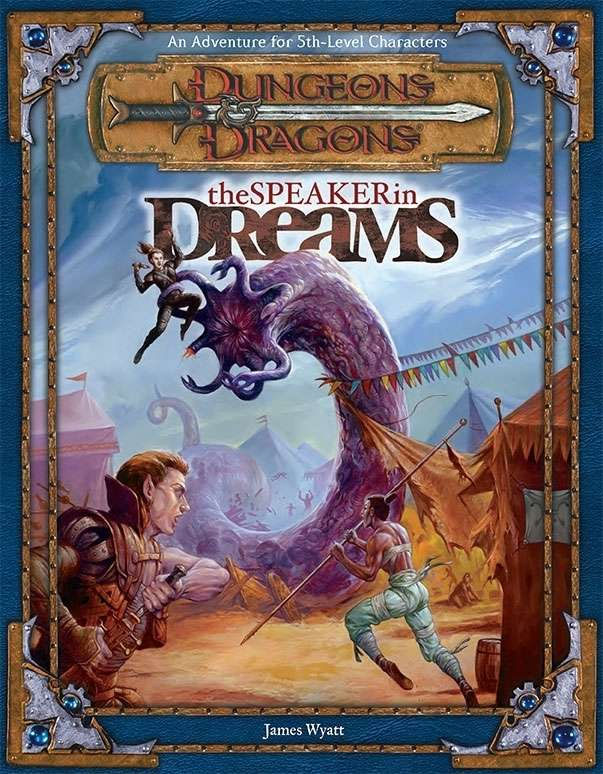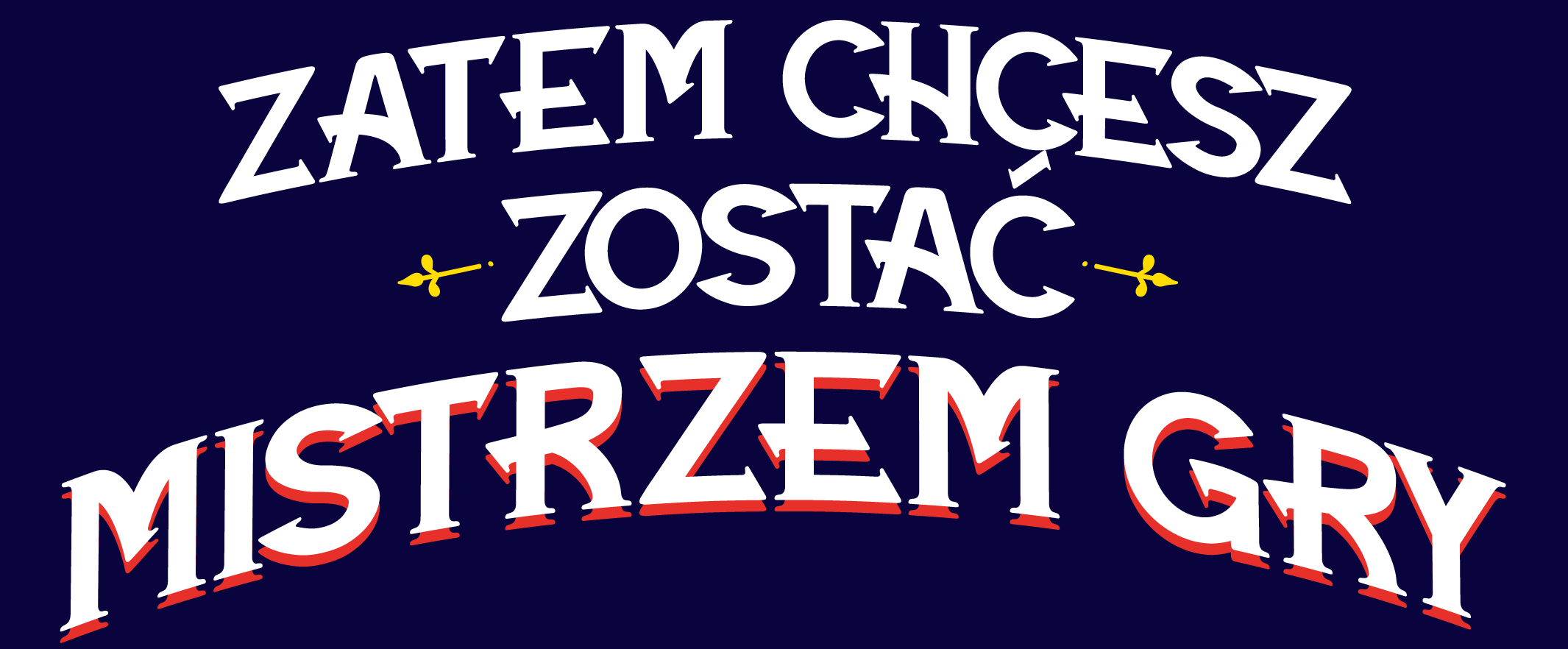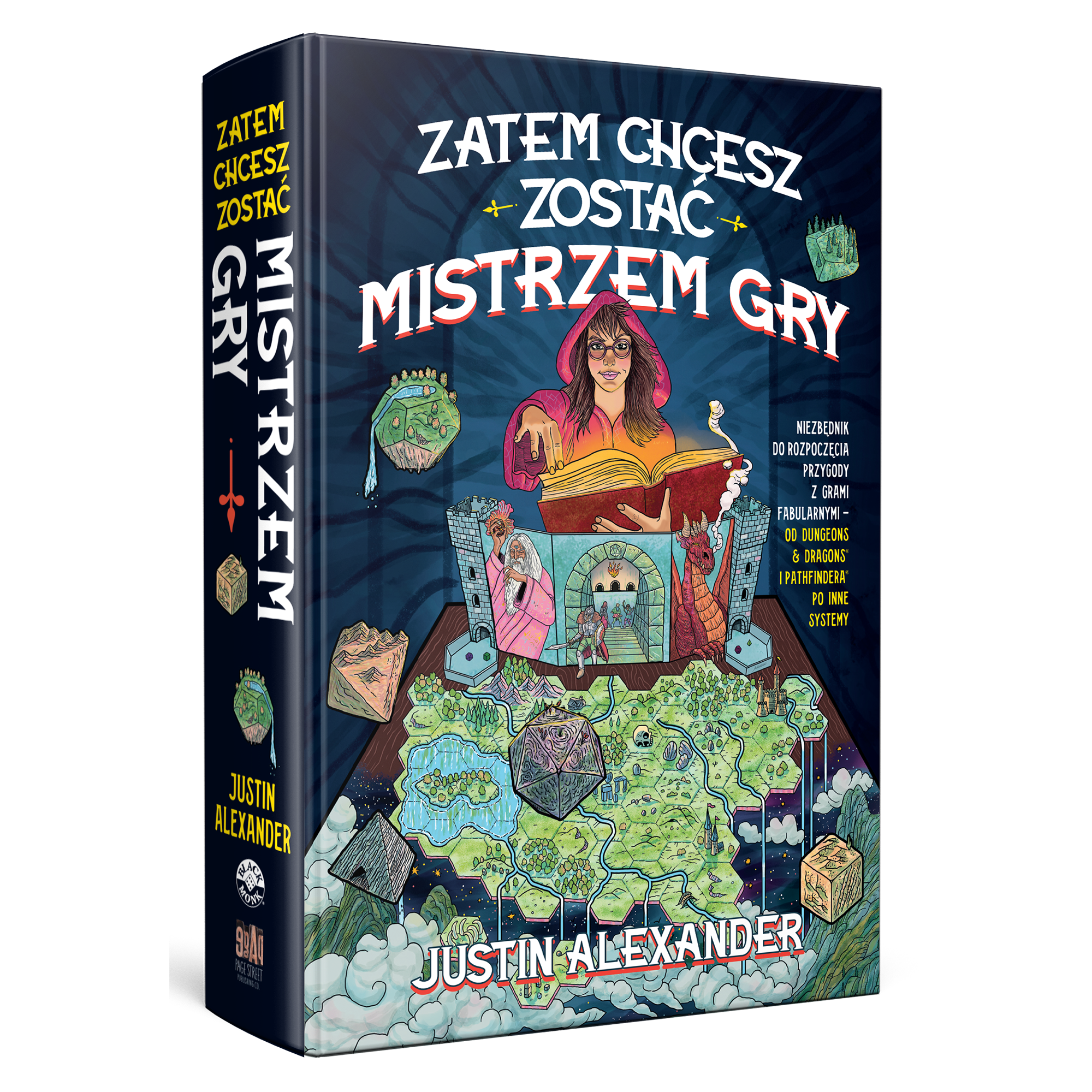James Wyatt provides Wizards of the Coast with another high quality adventure module, this time leaving the dungeon behind for the tempestuous problems of the city of Brindinford.
Review Originally Published May 21st, 2001
Many adventures of would-be greatness are dealt an Achilles’ heel of crippling proportions through the simple expectation that the PCs will follow a specific course of action – taking them, predictably, from one encounter to another. James Wyatt neatly sidesteps this problem time and time again in The Speaker of Dreams, on his way to presenting the first city-based adventure released by Wizards of the Coast for the 3rd Edition.
PLOT
Warning: This review will contain spoilers for The Speaker in Dreams. Players who may find themselves playing in this adventure should not read beyond this point. Three Days to Kill (Penumbra) and Death in Freeport (Green Ronin) will also be discussed in general terms.
The mind flayer Ghaerleth Axom has long been laying the groundwork for his plan to establish an empire of slaves upon the surface world, and the starting point for his conquest is the town of Brindinford.
The Speaker in Dreams is an adventure in two parts. In the first part, the PCs are attending a local fair in Brindinford when a troop of wererats begin strewing chaos. As the PCs attempt to track the wererats back to their lair, they will uncover other monstrous groups. And when they finally track the wererats down, they will discover that the rats were acting in the employ of a group of insane sorcerers. Once they’ve gotten rid of the sorcerers, the PCs – and the city at large — will believe that they’ve solved the problem.
The truth, of course, is that the sorcerers were being unwittingly manipulated by the mind flayer through the use of his telepathic abilities. As the PCs leave a feast thrown in their honor, the mind flayer’s remaining forces will launch an assassination attempt, launching the second part of the adventure. The PCs will, hopefully, escape unscathed – but the incident will provide a pretext for the lord of the town (who is also being controlled by the mind flayer) to institute martial law. Over the next few days the situation in the city will deteriorate considerably as the mind flayer’s demonic forces – empowered by the lord’s authority – tighten their grip of terror.
CONCLUSION
The opening of The Speaker in Dreams calls for comparison to Penumbra’s Three Days to Kill (which also opens with a fair). Here I feel that Three Days to Kill comes out on top: Not only by presenting a fair with a history and purpose – giving it a specific character and presence within your game world (instead of being simply “generic fantasy fair” – pun intended), but also by presenting several actual activities which the PCs can take part in while at the fair (something James Wyatt overlooks completely).
The rest of The Speaker in Dreams, on the other hand, calls for comparison to Green Ronin’s Freeport adventures (which also deal with an evil, mystical conspiracy lurking within the walls of a city). Here I feel that Freeport has the advantage when it comes to the conceptual and epic scope behind the conspiracy, but I feel that Wyatt has succeeded in organizing The Speaker in Dreams so that it is a more playable – and perhaps even more memorable – adventure.
My assessment, in short: Although not as memorable as The Sunless Citadel, The Forge of Fury, or the Freeport Trilogy, The Speaker of Dreams manages to avoid committing some of the minor flaws of actual design which tarnish the otherwise impeccable quality of those other adventures. Half a dozen of one, six of the other. James Wyatt has produced a high quality product.
Style: 4
Substance: 4
Authors: James Wyatt
Company: Wizards of the Coast
Line: Dungeons & Dragons
Price: $9.95
ISBN: 0-7869-1830-6
Production Code: WTC11830
Pages: 32
The Speaker in Dreams was the third Adventure Path module released for D&D 3rd Edition. Although I had slotted the two previous modules — The Sunless Citadel and The Forge of Fury — into my first 3rd Edition campaign, the same was not true for Speaker. This had nothing to do with the quality of the adventure, but was simply because there was nowhere to slot Speaker into my campaign arc.
Anecdotally, this seemed to be true for a lot of people: They ran Sunless Citadel and Forge of Fury, but then parted ways with the loosely connected Adventure Path modules. This may have been because the event-based Speaker was more difficult to slot into a campaign than the site-based adventures, but I think it’s also likely that these adventures were just coming out too slowly. These were being released every other month, so if you started your campaign with The Sunless Citadel in September 2000, it would have been January 2001 before you could pick up this 5th-level adventure.
By contrast, when Paizo began releasing their stand-alone Adventure Paths several years later, the 5th-level installment would be released 30 days after the first installment, making it far less likely that a group could outrun the pace of the campaign, even if they started playing it immediately upon release.
In any case, having neither prepped nor run The Speaker in Dreams, my memories of the module itself are quite dim twenty-five years later. One of the quirks of the “living memory” we have of our RPG adventures.
For an explanation of where these reviews came from and why you can no longer find them at RPGNet, click here.

















